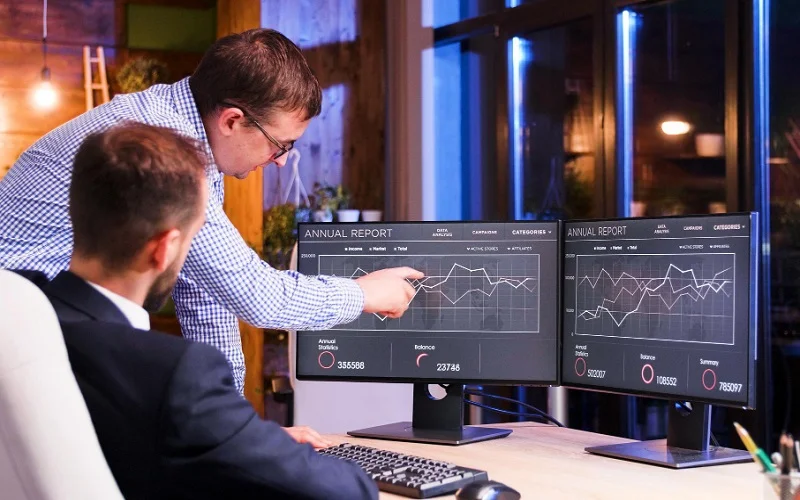Three years ago, I was that manager who thought employee monitoring was just fancy spying.
Fast forward to today, and I can’t imagine running a team without it. Not because I don’t trust my people—quite the opposite. It’s because the insights these tools provide have changed the way we coach, collaborate, and celebrate wins.
Let me share how this shift occurred and why you could be overlooking your team’s fastest route to growth.
From Suspicion to Growth Opportunity
When we rolled out monitoring software, team reactions were… how should I say it… mixed. Some felt like we were peering over their shoulders, and others believed it was cover for a forthcoming layoff.
To be honest, I felt a twinge of that anxiety, too.
Then, a month in, Sarah, one of our graphic designers, pulled me aside. She had ideas, sure, but that one chat flipped my understanding on its head.
“I never knew I was chunking three hours a day just hopping between design apps,” she said, showing off her weekly activity report. “Check it out—40 minutes wasted just waiting for programs to load and getting my brain back in gear.”
Nobody was hovering over her desk; she’d just dug deeper into her own data.
A week later, Sarah had trimmed the clutter, merged a few tools into one dashboard, and was churning out the same pixel-perfect deliverables three hours faster. Less time, same outcome. The numbers had pointed the way.
Real Awareness Beats Guesswork
Here’s the takeaway: the smartest “employee monitoring” doesn’t stalk for slack; it lifts the hood and shows you what the engine is really doing all day. We’ve applied that insight across the board.
Take our support desk as a case in point. Response times were all over the map, but the traditional stats—call volumes, case closure rates—never told us which gear the team was actually in. We shrugged and ran more reports. One dashboard later, the answer bubbled to the surface.
It turns out our highest-scoring reps weren’t the ones who answered questions loud and fast. They paused at the right times, tapped out recovery breaths, and filled lulls between tickets with quick skims of knowledge base articles. Energy, it seems, behaves like compound interest when you start tracking it.
This eye-opening insight shifted everything for us on the training floor. Rather than drilling every person on cutting call-handling time, we now coach the team on managing their energy in the room, nudging employees to pace themselves intelligently throughout the day. Customer satisfaction metrics surged 23% in just sixty days.
Don’t Fall for Pizazz: Expose What Delivers
When leaders shop for monitoring tools, they zoom in on eye-catching features whose efficiency stats disappear in the fine print. Focus on what really influences productivity:
- Contextual tracking out-performs basic time stamps every time. The Controlio app goes beyond “two hours in Photoshop” and tells you whether someone sketched wireframes, refined icons, or stared at an empty canvas in an energy slump.
- Trend spotting applies insight at scale. One timestamp sparks curiosity, but patterns illuminate strategy. If your top developer feels lucky between 2:00 and 4:00 PM but gets knee-deep in midday stand-ups, the data nudges the calendar.
- Guidance, not data dumps, fuels progress. Exposed to raw numbers, leaders waste time guessing; filtered alerts and pre-packaged sprint suggestions accelerate execution and keep the team away from pivot spreadsheets.
The Trust Paradox That Changes Everything
The most surprising discovery: great monitoring programs spark trust instead of suspicion. When teams see data not as surveillance but as momentum, the entire culture accelerates together.
I watched this unfold with Marcus, a remote developer who at first pushed back hard against our new monitoring tool. Three months later, he became its loudest cheerleader. The shift came for a simple reason: the numbers backed his way of working. Marcus liked to rise at 6 AM, crush focus time, and log off by 2 PM. A few teammates raised eyebrows over the early clock-out, but the monitoring dashboard quietly affirmed his approach: he regularly ranked among the team’s top performers. Instead of sitting through repeated debates over work hours, he shared the dashboard link.
KPI graphs confirmed his output, commit frequencies validated his code quality, and staged-review metrics revealed few revisions. “Finally, my work trumps the whispers,” he said at our quarterly review. The lesson is clear: metrics tell the truth anyone can verify.
Rolling out monitoring tools, however, is not merely a tech install. You’re orchestrating a culture shift, and that takes care. Start with crystal clarity. Before the first line of code is pushed, we gather the entire team. In an hour-long open forum, we detail exactly what the tool will track, the purpose of each data point, and the safeguards keeping that data secure. No smoke and mirrors, no bonus caveats revealed later.
Focus on Growth, Not Guilt
We drew a bright line: the metrics on monitoring dashboards are all about lifting people, never hitting them with punishment. Those first reports we collected? They went straight to one-on-one coaching chats, never into a performance clipboard with red ink on it.
Let the Data Belong to the Doer
Every person on the team has a window into their own monitoring dashboard. No, it’s not leadership peeking over shoulders. It’s a personal coaching space, showing someone exactly how they spend their hours and how shifts in habits can make every day a little better.
Explore the Built-In Improvement Tools
The employee computer monitoring software, like the Controlio app we rolled out, includes a self-service dashboard. Each team member logs in, views their own data, and spots possibilities for tomorrow. No middle manager needed.
Spotlights of Success
The coolest part about monitoring tools today? They bend to fit any team’s rhythm.
- Marketing noticed their best ideas spark in unpredictable waves. They ditched strict 9-to-5 rules and instead scheduled “creative blocks” mixed with calmer admin hours. The result? Campaigns still wrapped on schedule, and every single one looks even sharper.
- Sales learned that top closers weren’t just dialing more numbers. They were diving deeper into research, hitting prospects at exactly the right moment, and sharing personalized pitches. We traded “make more calls” scripts for “make better prep” coaching. Conversion numbers went up, and the team felt more in control.
- Our remote customer success analysts tracked usage patterns to find the sweet spot for client check-ins. By reaching out when response rates dipped but before inertia set in, we boosted client retention by 18%.
The Privacy Balance That Actually Works
Let’s talk about privacy: the concerns are real, and ignoring them isn’t an option. We drew a firm line from day one: only work devices, only when you’re on the clock. Anything personal, voluntary, or applied outside office hours stays outside.
To respect concerns even further, we added “focus mode.” Employees can temporarily mute non-vital measurements during sensitive Zooms or creative storms. The mode’s an opt-in, classical transparency: you decide, and we respect it.
Quarterly privacy audits keep the process honest. Engineers check that we’re gathering only what’s genuinely useful, and data stays encrypted from collection to archive.
Looking Forward: The Strategic Advantage
With hybrid work maturing from experiment to default, monitoring tools are shifting from gimmicky dashboards to strategic power plants. Machine learning already spot-checks health signals that predate burnout; we intervene while the signal stays subtle.
Richer integration is the next leap. Soon, record patterns in our privacy-observant monitoring tool will talk automatically to project pipelines, performance docs, and voluntary wellness programs—silos laid to history, insight to action, always with consent.
The Controlio app I mentioned now offers smart features that recommend the best time to take breaks, point out workflow tweaks, and even flag when team members could use extra training or support.
The Bottom Line
Employee monitoring software is really about clarity—not control.
Clarity on what’s going well, what’s lagging, and what’s ripe for improvement.
When you roll these tools out the right way, they don’t build a surveillance fortress; they cultivate a learning zone where everybody gets the data they need to shine.
Teams that take this route don’t just clock more hours; they clock more focus, more confidence, and an endless cycle of improvement.
In a world that’s always more competitive, this is less of a bonus and more of a requirement.
The key question isn’t whether monitoring software suits you; it’s whether you can afford to gamble on productivity, performance, and potential without the insights these tools hand you. Chances are, your rivals are already in line for those answers.




